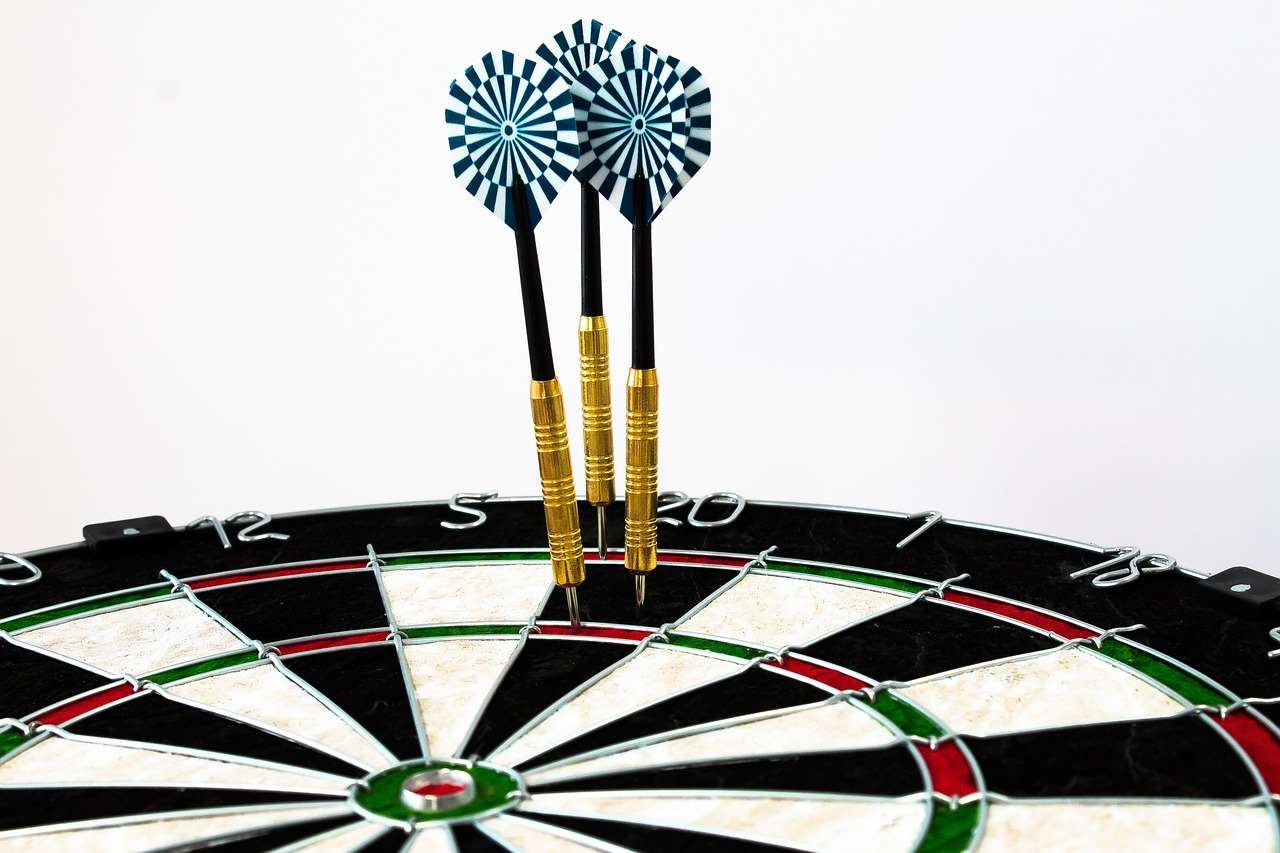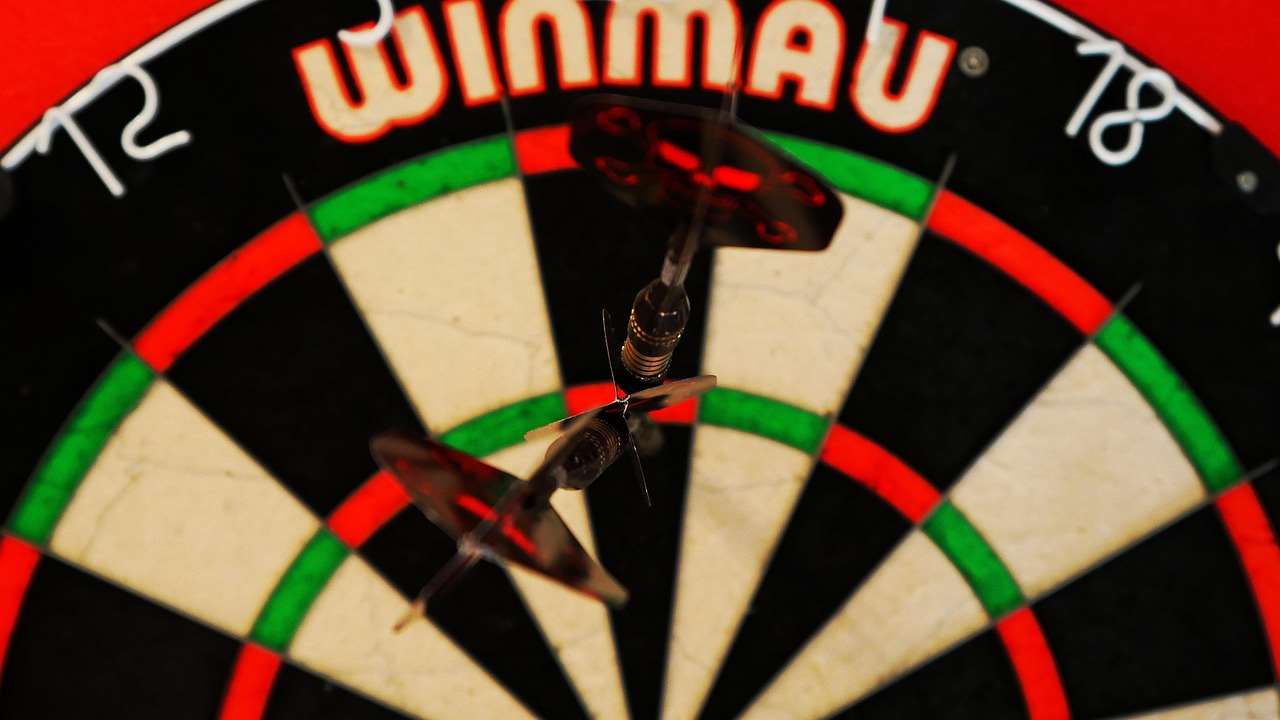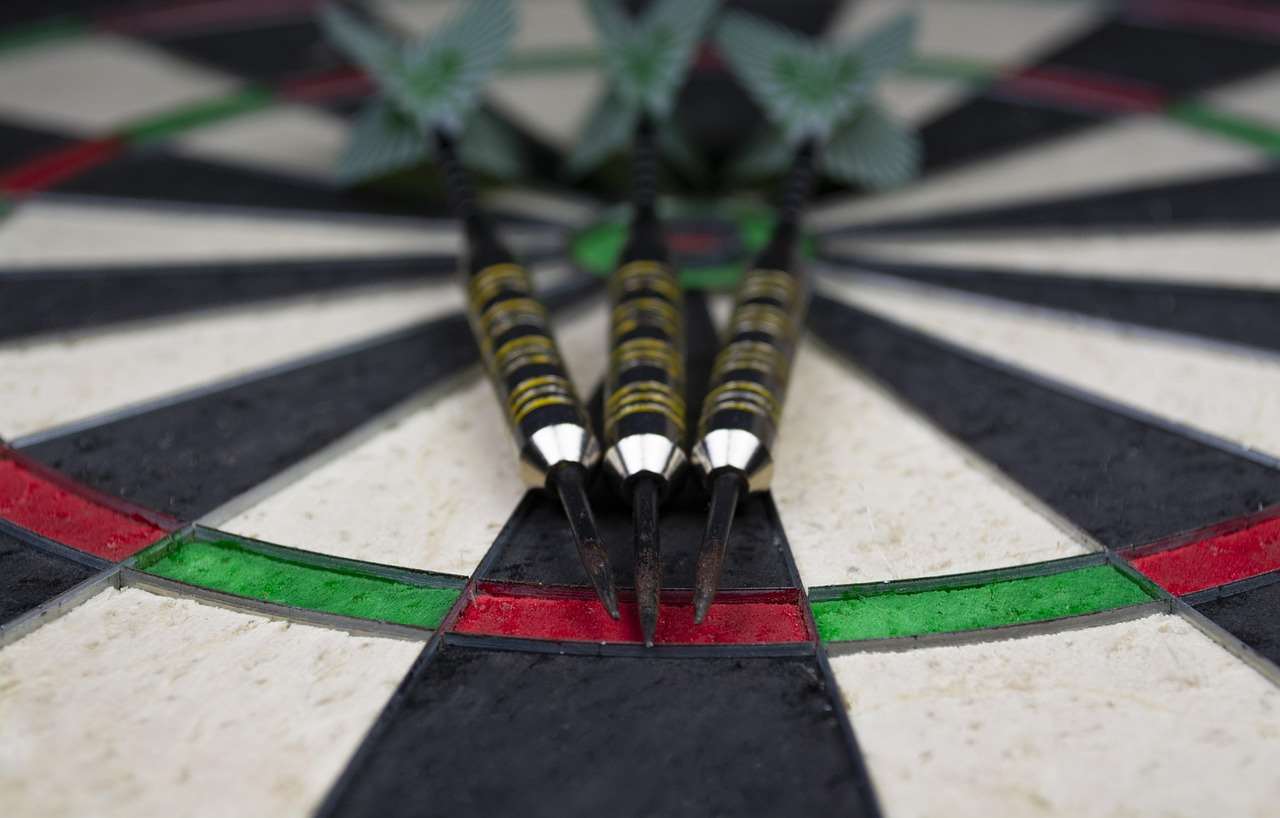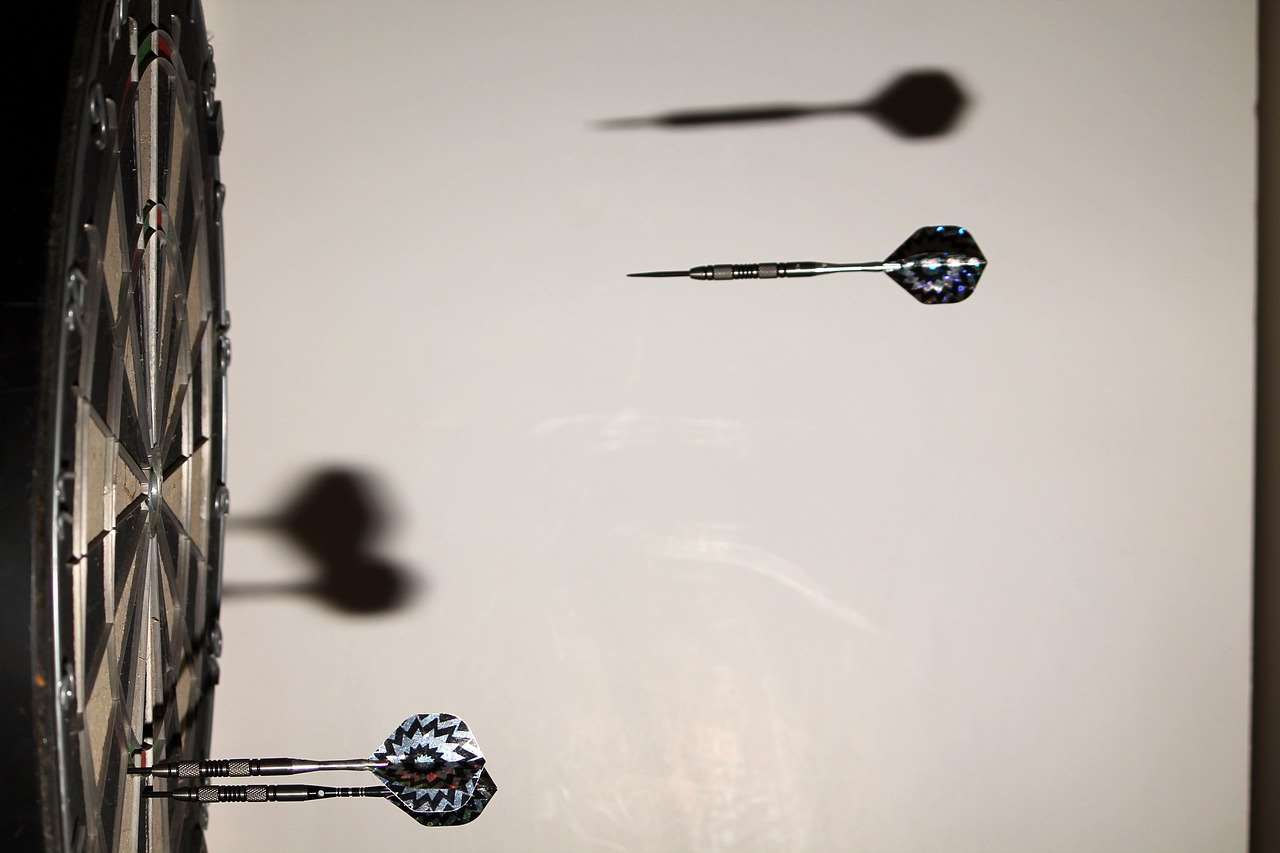To ‘close’ a number in Cricket darts, you must score three marks on that number. This means hitting the single, double, or triple segment of that number until you reach a total of three hits. This article will delve into the strategies, scoring nuances, and tactical considerations involved in mastering the art of closing numbers in Cricket.
⚠️ Still Using Pen & Paper (Of een schoolbord)?! ⚠️
Stap in de toekomst! De Dart Teller -app behandelt alle scoren, stelt kassa voor, en volgt uw statistieken automatisch. It's easier than you think!
Probeer de Smart Dart Teller -app gratis!Klaar voor een upgrade? Klik hierboven!
Understanding the Fundamentals of Closing in Cricket Darts
Cricket darts is a strategic game where players aim to ‘close’ numbers and accumulate points before their opponent. The standard numbers in Cricket are 20, 19, 18, 17, 16, 15, and the bullseye. How to ‘close’ a number in Cricket darts is the crux of the game. In wezen, you need to hit a specific number three times to “close” it. A single hit counts as one mark, a double counts as two marks, and a triple counts as three marks.
Once a number is closed by a player, they can score points on that number if their opponent hasn’t closed it yet. Echter, once both players have closed a number, it’s effectively out of play.

Strategic Approaches to Closing Numbers
Prioritizing High-Value Numbers
A common strategy is to focus on closing the higher numbers first, especially 20 En 19. These numbers offer the greatest potential for scoring if you close them before your opponent does. Closing the 20s allows you to score big points if your opponent is still struggling to close it.
Defensive Closing
Sometimes, the best offense is a good defense. If your opponent is consistently hitting a particular number but hasn’t closed it, it might be wise to focus on closing that number yourself, even if it’s not your highest priority. This prevents them from scoring on it and potentially gaining a significant lead.
Considering Your Opponent’s Skill Level
Adjust your strategy based on your opponent’s skill. Against a less skilled player, you might prioritize aggressive scoring on open numbers. Against a more skilled player, you might need to focus more on defensive closing and preventing them from scoring.
Scoring and Point Accumulation After Closing
After you close a number, any further hits on that number, while your opponent hasn’t closed it, will earn you points. These points are added to your score. The goal is not only to close all the required numbers, but also to have more points than your opponent when all numbers are closed. This adds a layer of complexity to the game.

Understanding Point Calculation
Points are calculated based on the segment you hit on an open number. A single counts as the number’s value (Bijv., 20 points for hitting the single 20), a double counts as twice the number’s value (Bijv., 40 points for hitting the double 20), and a triple counts as three times the number’s value (Bijv., 60 points for hitting the triple 20). Mastering Basic Darts Fundamentals for Beginners is crucial before attempting advanced strategies.
When to Stop Scoring
It’s important to recognize when to stop scoring on a number. Once you have a significant point lead, it might be more advantageous to switch your focus to closing remaining numbers or playing defensively. Over-scoring can be risky, especially if it leaves you vulnerable to your opponent catching up.
Advanced Tactics for ‘Closing’ Numbers in Cricket
The Art of the Setup Shot
Setting up your next shot is crucial. Bijvoorbeeld, if you have one mark on the 20 and need two more, your first dart might be aimed at the single 20, intending to leave yourself a clear shot at the double 20 with your next dart. This requires careful planning and execution.
Using the Board Strategically
Don’t limit yourself to only aiming for the single, double, or triple of a number. Sometimes, hitting a neighboring number can be a strategic move, either to avoid busting or to set up a better shot on your target number. This is especially useful when you are under pressure.
Target Switching
Be prepared to switch your target mid-turn if necessary. If your first dart misses badly, adjust your strategy immediately. Don’t blindly throw the remaining darts at the same target; assess the situation and adapt.

Common Mistakes to Avoid When Closing Numbers
Many players make preventable mistakes that hinder their ability to effectively ‘close’ numbers in Cricket. Understanding these pitfalls can significantly improve your game.
Ignoring the Importance of Accuracy
Cricket requires precision. Sloppy throwing will make it difficult to hit your target numbers consistently. Focus on developing a repeatable throwing motion and maintaining proper stance and grip.
Neglecting Strategy
Cricket is not just about hitting numbers; it’s about strategic planning. Don’t blindly throw darts without considering the game situation. Think about which numbers to close, when to score, and how to defend against your opponent.
Overlooking Opponent’s Progress
Pay close attention to your opponent’s progress. Knowing which numbers they are close to closing will help you make informed decisions about your own strategy. Are they on the verge of scoring big? Do you need to prioritize defensive closing?
Practice Drills to Improve Closing Accuracy
Consistent practice is essential for mastering the art of closing numbers in Cricket. Here are some effective drills you can incorporate into your training routine.
De “Three in a Bed” Oefening
Choose a number and aim to hit three singles, doubles, or triples of that number as quickly as possible. This drill improves accuracy and consistency on a specific target.
De “Around the Board” Oefening
Start with the 20 and work your way around the board, hitting each number in sequence. This drill helps develop accuracy on all the numbers used in Cricket.
De “Closing Under Pressure” Oefening
Simulate game situations by setting specific goals, such as closing a number in three darts while your opponent is on the verge of scoring. This drill helps you develop mental toughness and perform under pressure.
Psychological Aspects of Closing in Cricket Darts
Cricket darts is not just a physical game; it also requires mental fortitude. Staying focused, managing pressure, and maintaining a positive attitude are crucial for success.
Staying Calm Under Pressure
Closing a number under pressure can be challenging. Practice relaxation techniques to stay calm and focused when the stakes are high. Deep breathing and positive self-talk can help manage anxiety.
Visualizing Success
Before each throw, visualize yourself hitting your target. This mental rehearsal can improve your confidence and accuracy. Imagine the dart hitting the desired segment and feel the satisfaction of closing the number.
Dealing with Setbacks
Missed shots and setbacks are inevitable in Cricket. Don’t let them discourage you. Learn from your mistakes and maintain a positive attitude. Focus on the next shot and keep striving towards your goal.

Equipment Considerations for Optimal Closing Performance
The equipment you use can also impact your ability to effectively ‘close’ numbers in Cricket. Selecting the right darts, dartboard, and lighting can make a significant difference.
Choosing the Right Darts
Experiment with different dart weights, shapes, and grip styles to find the darts that best suit your throwing style. A comfortable and well-balanced dart will improve your accuracy and consistency.
Selecting a High-Quality Dartboard
Invest in a high-quality dartboard made of sisal fibers. These boards are more durable and offer better dart retention, reducing bounce-outs and improving your scoring potential. Ensure the board is mounted at the correct height.
Optimizing Lighting
Proper lighting is essential for clear visibility of the dartboard. Use a well-lit dartboard surround or overhead lighting to eliminate shadows and ensure you can clearly see your target. Proper lighting improves focus and reduces eye strain.
Integrating Closed Numbers into Overall Cricket Strategy
Closing numbers is a critical component of a successful Cricket strategy, but it’s essential to integrate it with other tactical considerations. Understanding when to prioritize closing versus scoring, and adapting your strategy to your opponent’s play, are key to maximizing your chances of winning. Don’t just focus on how to ‘close’ a number in Cricket darts, think holistically about your game plan.
Herinneren, even with the best technical skills, strategic decisions can make or break your game. Consider factors such as point differentials, remaining numbers, and your opponent’s weaknesses when developing your overall strategy.

Adapting to Different Cricket Variations
While the fundamental principle of closing numbers remains the same, the specific rules and strategies can vary depending on the Cricket variation being played. Some variations might include different scoring rules or additional target numbers. Fun dart game variations with modified rules can add excitement.
Be sure to familiarize yourself with the specific rules of the variation you are playing and adjust your strategy accordingly. Understanding these nuances can give you a significant advantage.
Conclusie: Mastering the Art of Closing in Cricket Darts
Mastering how to ‘close’ a number in Cricket darts is fundamental to success in this strategic game. By understanding the fundamentals, developing effective strategies, avoiding common mistakes, and consistently practicing, you can significantly improve your ability to close numbers and dominate the game. Remember to consider the psychological aspects of the game, optimize your equipment, and adapt your strategy to different Cricket variations.
Dus, pick up your darts, practice these techniques, and start closing those numbers! The key to improvement is consistent practice and strategic thinking. Good luck, and aim for the triple!
Hoi, Ik ben Dieter, En ik heb Dartcounter gemaakt (Dartcounterapp.com). Mijn motivatie was geen darts -expert - helemaal tegenovergestelde! Toen ik voor het eerst begon te spelen, Ik hield van het spel, maar vond het moeilijk en afleidend om nauwkeurige scores te houden en statistieken te volgen.
Ik dacht dat ik niet de enige kon zijn die hiermee worstelde. Dus, Ik besloot om een oplossing te bouwen: een eenvoudig te gebruiken applicatie die iedereen, Ongeacht hun ervaringsniveau, zou kunnen gebruiken om moeiteloos te scoren.
Mijn doel voor Dartcounter was eenvoudig: Laat de app de nummers afhandelen - het scoren, de gemiddelden, de statistieken, Zelfs checkout suggesties - zodat spelers puur kunnen richten op hun worp en genieten van het spel. Het begon als een manier om het probleem van mijn eigen beginners op te lossen, En ik ben heel blij dat het is uitgegroeid tot een nuttig hulpmiddel voor de bredere darts -community.